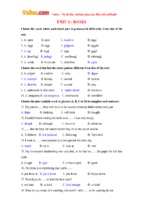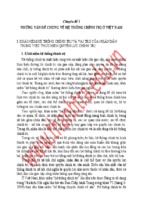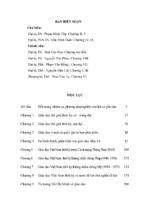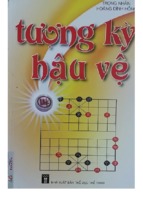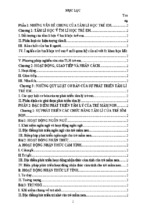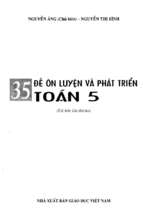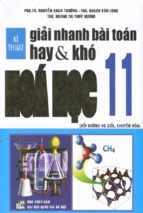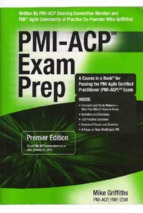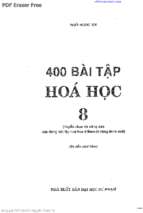An Introduction to
Data Structures and Algorithms
Consulting Editor
John C. Chemiavsky, National Science Foundation
J.A. Storer
An Introduction to
Data Structures and Aigorithms
Springer Science+Business Media, LLC
James A. Storer
Department of Computer Science
Brandeis University
Waltham, MA 02454
U.S.A.
Library of Congress Cataloging-in-Publication Data
Storer, James A. (James Andrew), 1953An introduetion to data struetures and algorithms / J.A. Storer.
p. em.
Inc1udes bibliographieal referenees and index.
ISBN 978-1-4612-6601-3
ISBN 978-1-4612-0075-8 (eBook)
DOI 10.1007/978-1-4612-0075-8
1. Data struetures (Computer seienee) 2. Computer algorithms. I. Title.
QA76.9.D33 S73 2001
oo5.7'3-de21
2001043503
AMS Subjeet Classifieations: Primary---(j8P05, 68W40, 68WIO; Seeondary---(j8Q25, 68P10, 68W20, 68W25
Printed on acid-free paper
©2002 J.A. Storer
Originally published by Birkhauser Boston / Springer-Verlag New York, Inc. in 2002
Softcover reprint of the hardcover 1st edition 2002
All rights reserved. This work may not be translated or copied in whole or in part without the written permission ofthe publisher (Springer Science+Business Media, LLC), except for brief excerpts in connection with reviews or scholarly analysis. U se in connection with any form of information storage and retrieval, electronic adaptation, computer software, or by similar or dissimilar methodology now known or
hereafter developed is forbidden.
The use of general descriptive names, trade names, trademarks, etc., in this publication, even if the
former are not especially identified, is not to be taken as a sign that such names, as understood by the
Trade Marks and Merchandise Marks Act, may accordingly be used freely by anyone.
SPIN 10841937
Typeset by the author
Cover design by Mary Burgess, Cambridge, MA
9 87 6 54 32 1
Preface
This book is for college-level students who are attending accompanying lectures on data
structures and algorithms. Except for the introduction, exercises, and notes for each
chapter, page breaks have been put in manually and the format corresponds to a lecture
style with ideas presented in "digestible" page-size quantities.
It is assumed that the reader's background includes some basic mathematics and
computer programming. Algorithms are presented with "pseudo-code", not programs
from a specific language. It works well to complement a course based on this book with a
programming "lab" that uses a manual for a specific programming language and assigns
projects relating to the material being taught.
Chapters 1 through 4 go at a slower pace than the remainder of the book, and include
sample exercises with solutions; some of the sections in these chapters are starred to
indicate that it may be appropriate to skip them on a first reading. A first course on data
structures and algorithms for undergraduates may be based on Chapters 1 through 4
(skipping most of the starred sections), along with portions of Chapter 5 (algorithm
design), the first half of Chapter 6 (hashing), the first half of Chapter 12 (graphs), and
possibly an overview of Chapter 13 (parallel models of computation). Although Chapters
1 through 4 cover more elementary material, and at a slower pace, the concise style of
this book makes it important that the instructor provide motivation, discuss sample
exercises, and assign homework to complement lectures. For upper class undergraduates
or first-year graduate students who have already had a course on elementary data
structures, Chapters 1 through 4 can be quickly reviewed and the course can essentially
start with the algorithm design techniques of Chapter 5.
There is no chapter on sorting. Instead, sorting is used in many examples, which include
bubble sort, merge sort, tree sort, heap sort, quick sort, and several parallel sorting
algorithms. Lower bounds on sorting by comparisons are included in the chapter on
heaps, in the context of lower bounds for comparison based structures. There is no
chapter on NP-completeness (although a section of the chapter on graph algorithms does
overview the notion). Formal treatment of complexity issues like this is left to a course on
the theory of computation.
Although traditional serial algorithms are taught, the last chapter presents the PRAM
model for parallel computation, discusses PRAM simulation, considers how the EREW
PRAM, HC/CCClButterfiy, and mesh models can be used for PRAM simulation, and
concludes with a discussion of hardware area-time tradeoffs as a way of comparing the
relative merits of simulation models. Although it is not clear what parallel computing
models will prevail in practice in the future, the basic concepts presented in the chapter
can provide a foundation for further study on specific practical architectures. Also, from
the point of view of studying algorithms, it is instructive to see how basic principles
taught in the previous chapters can be adapted to other models.
Acknowledgements
Many people provided helpful comments during the writing of this book.
In particular I would like to thank (in alphabetical order): R. Alterman,
B. Carpentieri, 1 Chemiavsky, M. Cohn, I. Gessel, A. Kostant, G. Motta,
T. Hickey, 1 Reif, F. Rizzo, 1 E. Storer, and I. Witten.
lA.S.2001
Contents
Preface ..................................................................................................................... v
Acknowledgements .................................................................................................. vi
1. It)l~ ~oclel •••••••••...•••...•••...•••...•••..•.•.••.•••.••. ••.••...•. 1
Introduction ................................................................................................... 1
Pseudo-Code .................................................................................................. 4
Example: n! - Pseudo-Code Versus Machine Code ............................. 5
Motivation for Asymptotic Time Complexity ................................................... 6
Analyzing Algorithms with Asymptotic Notation ............................................. 7
The 0 Notation .................................................................................. 7
Example: Bubble Sort ......................................................................... 8
Example: Run-Length Codes ............................................................... 9
Example: Horner's Method for Polynomial Evaluation ....................... 10
Example: Matrix Multiplication ........................................................ 11
Example: Pascal's Triangle of Binomial Coefficients .......................... 12
(*) Example: Solving Sets of Linear Equations ................................... 14
(*) Example: Lagrange Interpolation of Polynomials .......................... 16
Logarithms and Exponentials ........................................................................ 19
(*) Non-Integer Logarithms and Exponentials .................................... 20
Logarithms and Exponentials Versus Polynomials .............................. 21
Example: Binary Search ................................................................... 22
Example: Binary Numbers ................................................................ 23
(*) Representing Arrays ................................................................................ 24
The Significance of Asymptotic Complexity .................................................. 25
Basic Approach to Algorithm Design ............................................................. 26
Sample Exercises ......................................................................................... 27
Exercises ................................... , ................................................................. 42
Chapter Notes .............................................................................................. 54
2. Lists ................................................................... 59
Introduction ................................................................................................. 59
Array Implementation of Stacks .................................................................... 61
Example: Using a Stack to Reverse an Array ...................................... 62
(*) Example: Evaluating a Postfix Expression with a Stack ................. 63
Array Implementation of Queues ("Circular Queues") .................................... 64
Example: Using a Queue to Separate an Array ................................... 65
General Purpose Lists ................................................................................... 66
Example: Using the Basic List Operations .......................................... 67
Representing Lists With Pointers ................................................................... 68
Pointer Variables .............................................................................. 69
(*) Implementing Pointers ................................................................. 70
Implementation of the Basic List Operations in 0(1) Time .............................. 71
Example: Details of the INSERT Operation ....................................... 72
Example: Details ofthe DELETE Operation ...................................... 73
Example: Reversing a Singly Linked List.. ......................................... 74
(*) Example: The POP(i) Stack Operation .......................................... 75
Sample Exercises ......................................................................................... 76
Exercises ..................................................................................................... 81
Chapter Notes .............................................................................................. 85
3. Induction and Recursion ........................................... 87
Introduction ................................................................................................. 87
Example: Binary Search ................................................................... 89
Example: Traversing Linked Lists ..................................................... 90
Example: Fast Computation of Integer Exponents ............................... 91
(*) Example: Converting a String to a Number ................................... 92
(*) Example: Evaluating a Prefix Expression ...................................... 93
(*) Example: Converting Infix to Prefix or Postfix .............................. 94
Proof by Induction ........................................................................................ 95
Example: Summing Powers of 2 ........................................................ 95
Example: Summing Odd Integers ...................................................... 96
Example: Correctness of Binary Search ............................................. 97
Example: Towers of Hanoi Puzzle ..................................................... 98
Elimination of Recursion .............................................................................. 99
Example: Eliminating Recursion from n! ......................................... 100
Example: Complexity of Recursive n! ............................................. 101
Example: Eliminating Recursion from Towers of Hanoi ................... 102
Example: Complexity of TOWER ................................................... 103
Example: Non-Recursive Towers of Hanoi Algorithm ...................... 104
Sample Exercises ....................................................................................... 105
Exercises ................................................................................................... 117
Chapter Notes ............................................................................................ 125
viii
CONTENTS
4. Trees ................................................................. 127
Introduction ............................................................................................... 127
Tree Terms ................................................................................................ 128
Representing Trees ..................................................................................... 129
Pre-Order Traversal. ................................................................................... 130
Example: Height of a Vertex v ........................................................ 130
Level-Order Traversal ................................................................................ 131
Example: MIN-HEIGHT of a Vertex v ............................................ 131
Binary Search Trees ................................................................................... 132
Basic Binary Search Tree Operations ............................................... 133
Details of the DELETEMIN Operation ............................................ 134
Example: Some Sample Binary Search Tree Manipulations............... 135
In-Order Traversal of a Binary Search Tree ...................................... 136
Example: Evaluating An Arithmetic Expression ............................... 137
(*) Joining and Splitting Binary Search Trees ................................... 138
Indexing a Binary Search Tree ........................................................ 140
(*) Binary Search Tree Ordering Lemma ......................................... 141
(*) Average Time to Build a Binary Search Tree .............................. 142
The Rotation Operation for Binary Search Trees .......................................... 144
Self-Adjusting Binary Search Trees ............................................................. 146
(*) Amortized Complexity of Self-Adjusting Binary Search Trees ..... 148
Example: Tree Sort......................................................................... 149
Joining and Splitting Self-Adjusting Binary Search Trees ................. 150
Sample Exercises ....................................................................................... 151
Exercises ................................................................................................... 156
Chapter Notes ............................................................................................ 160
5. Algorithm Design ................................................... 161
Introduction ............................................................................................... 161
Divide and Conquer.................................................................................... 163
Example: Merge Sort ...................................................................... 164
Example: Quick Sort ...................................................................... 166
Example: Finding the /(h Largest Element ........................................ 167
Example: Polynomial Multiplication................................................ 168
Example: Strassen's Algorithm for Matrix Multiplication .................. 169
Divide and Conquer Recurrence Relations ................................................... 170
Dynamic Programming ............................................................................... 171
Example: The Knapsack Problem .................................................... 171
CONTENTS
ix
Example: The Paragraphing Problem ............................................... 172
Example: Optimal Ordering of Matrix Multiplications ...................... 173
Example: Context-Free Language Recognition ................................. 174
Dynamic Programming Sums ...................................................................... 175
Randomized Algorithms ............................................................................. 176
Example: Statistical Sampling ......................................................... 176
Example: Randomized Quick Sort ................................................... 177
Example: Randomized kth Largest Element.. ..................................... 178
Greedy Algorithms ..................................................................................... 180
Example: Bin Packing .................................................................... 180
Example: HuffInan Trees ................................................................ 181
Example: Shortest Common Superstrings ......................................... 182
Simulated Annealing .................................................................................. 183
Exercises ................................................................................................... 184
Chapter Notes ............................................................................................ 197
6. Hashing ....................................................................................................... 203
Introduction ............................................................................................... 203
Basic Hashing Algorithm ............................................................................ 204
Hash Functions for Data Items with Many Bits ............................................. 205
Complexity of Hashing ............................................................................... 206
The Constant e ........................................................................................... 207
Expected Number of Empty Buckets ........................................................... 208
Chernoff Bound ......................................................................................... 209
Size of the Largest Bucket .......................................................................... 210
Overfilling a Hash Table ............................................................................. 212
Resizing a Hash Table ................................................................................ 213
Universal Hashing ...................................................................................... 214
Twin Hashing ............................................................................................ 215
Bloom Filters ............................................................................................. 216
Exercises ................................................................................................... 217
Chapter Notes ............................................................................................ 221
x
CONTENTS
7. Heaps ................................................................ 223
Introduction ............................................................................................... 223
Complete k-ary Trees ................................................................................. 224
Full k-ary Trees .......................................................................................... 225
Heap Implementation with Full Trees .......................................................... 226
Building a Heap in Linear Time .................................................................. 227
Heap Sort. .................................................................................................. 228
Implementing Heaps with Pointers .............................................................. 229
Lower Bounds on Heap Operations and Sorting ........................................... 230
Exercises ................................................................................................... 232
Chapter Notes ............................................................................................ 236
8. Balanced Trees ..................................................... 237
Introduction ............................................................................................... 237
2-3 Trees ................................................................................................... 238
Inserting into a 2-3 Tree .................................................................. 239
Deleting from a 2-3 Tree ................................................................. 241
Joining 2-3 Trees ............................................................................ 244
Splitting 2-3 Trees .......................................................................... 246
Red-Black Trees ......................................................................................... 248
Properties of Red-Black Trees ......................................................... 249
Equivalence of Red-Black and 2-3 Trees .......................................... 250
Example: Red-Black Tree Insertion Algorithm ................................. 251
Example: Inserting into a Red-Black Tree in Sorted Order ................ 252
Height of a Red-Black Tree ............................................................. 253
AVL Trees ................................................................................................. 254
The AVL Algorithm ....................................................................... 255
Height of an AVL Tree ................................................................... 256
Storing Data Only in the Leaves .................................................................. 258
Exercises ................................................................................................... 259
Chapter Notes ............................................................................................ 267
9. Sets Over a Small Universe ....................................... 269
Introduction ............................................................................................... 269
On the Fly Array Initialization..................................................................... 271
In-Place Permutation .................................................................................. 272
CONTENTS
Xl
Bucket Sorting ........................................................................................... 273
Bit-Vector Representation of Sets ................................................................ 274
Union-Find Problem ................................................................................... 275
Linked List Implementation of Union-Find ...................................... 276
Tree Implementation of Union-Find ................................................ 277
Tree Implementation of Union-Find with Path Compression ............. 278
Example: Off-Line Processing of Heap Operations ........................... 280
Other Operations that can be Added to Union-Find ........................... 281
Exercises ................................................................................................... 282
Chapter Notes ............................................................................................ 288
10. Graphs ............................................................. 289
Introduction ............................................................................................... 289
Graph Terms .............................................................................................. 290
Representing Graphs .................................................................................. 291
Depth-First Search...................................................................................... 292
Breadth-First Search ................................................................................... 293
Depth-First Spanning Trees ......................................................................... 294
Bi-Connected and Strongly-Connected Components ..................................... 295
Bi-Connected Components of an Undirected Graph .......................... 296
Strongly-Connected Components of a Directed Graph ...................... 297
Minimum Weight Spanning Trees ............................................................... 298
Proof of Correctness of Prim and Kruskal Algorithms ....................... 298
Implementation of Prim's Algorithm ................................................ 299
Implementation of Kruskal's Algorithm ........................................... 300
Topological Sort of a Directed Graph .......................................................... 301
Euler Paths ................................................................................................. 302
Single-Source Minimum Cost Paths ............................................................ 303
Dijkstra's Algorithm ....................................................................... 303
Adjacency Matrix Implementation of Dijkstra's Algorithm ................ 304
Adjacency List Implementation of Dijkstra's Algorithm .................... 304
All Pairs Minimum Cost Paths .................................................................... 305
Floyd's Algorithm for Shortest Paths................................................ 305
Warshall's Algorithm for Transitive Closure..................................... 306
Generic Path Finding Framework .................................................... 307
Maximum Flow.......................................................................................... 308
Undirected Paths ............................................................................ 309
xii
CONTENTS
Augmenting Paths .......................................................................... 309
Augmenting Path Theorem for Flow ................................................ 309
Max-Flow = Min-Cut Theorem ....................................................... 309
Generic Approach to Computing Maximum Flow ............................. 310
Edmonds-Karp Algorithm .............................................................. 311
The Residual and Level Graphs ....................................................... 313
Blocking Flows .............................................................................. 314
Dinic's Algorithm ........................................................................... 314
MKM Algorithm ............................................................................ 315
Bounded Flow ................................................................................ 316
Maximum Matching ................................................................................... 318
Augmenting Path Theorem for Matching ......................................... 318
Matching in Bipartite Graphs .......................................................... 319
Matching in Undirected Graphs ....................................................... 321
Stable Marriage .......................................................................................... 324
NP-Complete Graph Problems .................................................................... 325
Polynomial-Time Reductions .......................................................... 326
NP-Complete Problems .................................................................. 326
The Class NP ................................................................................. 326
The "first" NP-Complete Problem ................................................... 327
The "second" NP-Complete Problem ............................................... 327
Dealing with NP-Complete Graph Problems .................................... 328
Exercises ................................................................................................... 329
Chapter Notes ............................................................................................ 348
11. Strings .............................................................. 355
Introduction ............................................................................................... 355
Lexicographic Sorting of Strings ................................................................. 357
Knuth-Morris-Pratt (KMP) String Matching ............................................... 358
KMP Algorithm Using Back-Up Links ............................................ 358
Back-Up Diagrams ......................................................................... 359
Efficient Computation ofthe KMP Back-Up Array ........................... 360
Converting the KMP Back-Up Array to Direct Links ........................ 361
KMP Algorithm Using Direct Links ................................................ 361
Reducing the Space for the KMP Direct Array ................................. 362
Boyer-Moore String Matching .................................................................... 363
Karp-Rabin Randomized "Finger Print" String Matching .............................. 364
Shift-And String Matching .......................................................................... 365
Shift-and with don't-care positions ................................................... 365
Shift-And with Anything-But Positions ............................................ 366
CONTENTS
xiii
Shift-And with Minimum Mis-Matches ........................................... 368
Shift-And with Character Mapping .................................................. 369
Shift-And with Character Bit-Vectors .............................................. 370
Comparison of String Matching Methods ..................................................... 373
Pattern Matching ........................................................................................ 374
Pattern Diagrams ............................................................................ 375
McNaughton-Yamada Algorithm .................................................... 376
Matching with Pattern Diagrams ..................................................... 378
Tries .......................................................................................................... 379
Example: Sorting Strings with Tries ................................................ 379
Example: Aho-Corasick Multiple String Matching ........................... 380
Example: Prefix and Huffman Codes ............................................... 381
Example: Data Compression using a Dynamic Dictionary ................. 382
Compact Tries ............................................................................................ 384
Suffix Tries ................................................................................................ 385
Example Applications of Suffix Tries .............................................. 385
Simple Suffix Trie Construction Algorithm ...................................... 386
McCreight's Linear Time Suffix Trie Construction ........................... 387
Example: Brute-Force Versus McCreight on an$ .............................. 389
Sliding Suffix Tries .................................................................................... 390
Sliding Window With Two McCreight Tries .................................... 391
Fiala-Greene Sliding Suffix Trie Algorithm ..................................... 392
Example: Data Compression using a Sliding Window ....................... 394
Edit Distance: A Measure of String Similarity .............................................. 395
Example: Longest Common Sub-Sequence ...................................... 396
Arithmetic Codes ....................................................................................... 397
Conceptual Arithmetic Encoding / Decoding Algorithm .................... 398
Defining The End of a Finite String ................................................. 399
Example ........................................................................................ 400
On-Line Encoding and Decoding ..................................................... 402
Practical Considerations .................................................................. 402
The Burrows-Wheeler Transform ............................................................... 403
Inverse BWT Using Only Two Passes ............................................. 404
Example: MTF Data Compression ................................................... 405
Exercises ................................................................................................... 407
Chapter Notes ............................................................................................ 414
XIV
CONTENTS
12. Discrete Fourier Transform ..................................... 421
Introduction ............................................................................................... 421
Complex Numbers ...................................................................................... 422
Complex Exponentials ................................................................................ 423
Principal nth Roots of Unity ......................................................................... 424
Definition of the DFT ................................................................................. 425
F and G are Inverse Functions ..................................................................... 426
Similarity of F and G.................................................................................. 426
Examples ................................................................................................... 427
How to Split F into Two Computations of Half the Size ................................ 431
Divide and Conquer "Butterfly" .................................................................. 432
Recursive FFT Algorithm ........................................................................... 433
In-Place Bit Reversal .................................................................................. 434
Recursive In-Place FFT Algorithm .............................................................. 435
Non-Recursive In-Place FFT Algorithm....................................................... 436
Simplified Non-Recursive In-Place FFT Algorithm ...................................... 437
DFT over Finite Fields on an Array of Integers ............................................ 439
Example: Fast Convolutions with the DFT ................................................... 440
DFT On Two Arrays of Reals ..................................................................... 441
DFT On A Single Array of Reals ................................................................. 442
Inverse DFT for Reals ................................................................................ 443
Discrete Cosine Transform.......................................................................... 444
C and D are Inverse Functions ..................................................................... 445
DCT Basis Functions .................................................................................. 446
Relationship of the DCT to the DFT ............................................................ 447
Computing the DCT in O(nlog(n)) Time ..................................................... 448
Computing the Inverse DCT in O(nlog(n)) Time .......................................... 449
Two Dimensional DFT and DCT ................................................................. 451
Example: JPEG Image Compression ............................................................ 452
Example: MPEG Video Compression .......................................................... 453
Exercises ................................................................................................... 454
Chapter Notes: ........................................................................................... 467
CONTENTS
xv
13. Parallel Computation ............................................. 471
Introduction ............................................................................................... 471
Example: Summing an Array .......................................................... 478
Example: List Prefix-Sum / List Ranking ......................................... 479
Example: List Prefix-Sum on a Binary Tree ..................................... 480
Example: 0(1) CRCW Array Max with 0(n2) Processors .................. 482
Example: O(loglog(n)) CRCW Array Max with O(n) Processors ....... 483
Example: Matrix Multiplication ...................................................... 484
Example: Merge Sort.. .................................................................... 485
Example: Quick Sort ...................................................................... 486
Brent's Lemma ........................................................................................... 487
PRAM Simulation ...................................................................................... 488
EREW PRAM MODEL .............................................................................. 489
Example: Broadcast on an EREW PRAM ........................................ 489
Example: Sum on an EREW PRAM ................................................ 489
Example: Matrix Multiplication on an EREW PRAM ....................... 490
Data Distribution on an EREW PRAM ............................................ 491
Sorting on an EREW PRAM ........................................................... 492
Hypercube / CCC / Butterfly Networks ........................................................ 496
Hypercube (HC) ............................................................................. 496
Cube Connected Cycles (CCC) ....................................................... 496
Butterfly (BF) ................................................................................ 497
Equivalence ofthe CCC and Butterfly Networks .............................. 498
Example: Broadcast and Sum on a Butterfly ..................................... 499
Example: Prefix-Sum on a Butterfly ................................................ 500
Example: Matrix Multiplication on a Butterfly ................................. 501
Data Distribution on a Butterfly ...................................................... 502
Sorting on a Butterfly ..................................................................... 504
1-1 Packet Routing on a Butterfly .................................................... 506
Mesh Network ........................................................................................... 507
Example: Broadcast on a Mesh ........................................................ 508
Example: Sum on a Mesh ............................................................... 508
Example: Prefix-Sum on a Mesh ..................................................... 509
Example: Matrix Multiplication on a Mesh ...................................... 510
Data Distribution on a Mesh ............................................................ 512
Sorting on a Mesh .......................................................................... 513
1-1 Packet Routing on a Mesh ......................................................... 514
Area-Time Tradeoffs .................................................................................. 515
Computer Chips ............................................................................. 515
Boolean Functions .......................................................................... 515
Example: cMOS ............................................................................. 516
xvi
CONTENTS
Example: nMOS ............................................................................. 517
Constructing Memory With Chips ................................................... 518
Computing with Chips .................................................................... 520
Parallel Hardware Layout ............................................................... 521
Area-Time Tradeoff for Sorting....................................................... 522
Sorting Area-Time Tradeoff vs. PRAM Simulation .......................... 524
Generalizations ofthe Sorting Area-Time Tradeoff........................... 524
Exercises ................................................................................................... 525
Chapter Notes ............................................................................................ 540
Appendix: Common SumS ........................................... 543
A. Approximating Sums with Integrals ........................................................ 543
B. Arithmetic Sum...................................................................................... 545
C. Simple Geometric Sum (unweighted, k=O)............................................... 546
D. Linear Weighted Geometric Sum (k= 1) ................................................... 547
E. Quadratic Weighted Geometric Sum (k=2) .............................................. 548
F. Cubic Weighted Geometric Sum (k=3) .................................................... 549
G. Weighted Geometric Sum (for any non-negative integer k) ....................... 550
I. Harmonic Sum ........................................................................................ 553
1. Sums of Inverse Powers ........................................................................... 554
Bibliography ........................................................... 555
Notation ................................................................ 583
Index .................................................................... 585
CONTENTS
xvii
1. RAM Model
Introduction
Efficient data structures and algorithms can be the key to designing practical programs.
Most of this book addresses the traditional model of a computer as pictured below; some
memory together with a single processor that can perform basic arithmetic operations
(e.g., add, subtract, multiply, divide), make logical tests (e.g., test if a value is less than
zero), and follow flow of control accordingly (e.g., goto instructions). The processor may
include a few special registers that can be manipulated faster than normal memory, but
the bulk of memory is uniform in the sense that access to all locations of memory is
equally fast, from which comes the name Random Access Memory (RAM). Of course,
computers in practice are much more complicated, with cache memory, secondary
storage, mUltiple processors, etc. However, design methodology based on the RAM
model has traditionally served well in more complex models.
;r~4()~
c8;cc~§~~
m~mQ~
. ~:. :,: :<:'. ":':
A key simplifying assumption is that operations are unit-cost. Each basic instruction
takes one "unit" of time, and we count the number of basic instructions executed to
measure time. Furthermore, the size of a number in an operation is not taken into account.
For example, it is one time unit to add two numbers, independent of their size. Although
these assumptions are not true in practice, if we do not "abuse" the unit-cost RAM model,
our designs will be sound and provide the basis for practical algorithms on a variety of
architectures. For example, if we have enough memory in practice to store n integers,
then it is reasonable to assume that basic machine instructions can manipulate integers in
the range 0 to n.
On the other hand, consider the following program that repeatedly multiplies by 10:
1. Set the variable x equal to 10.
2. Repeat for n steps the operation of mUltiplying x by 10.
Since each multiplication adds another digit to x, this program computes a value with
over n digits. When n is large, it may not be realistic to assume that numbers of n digits
J. A. Storer, An Introduction to Data Structures and Algorithms
© J.A. Storer 2002
can be stored in a single machine register and multiplied with a single machine
instruction. A more "dramatic" example repeatedly squares a value:
1. Set the variable x equal to 10.
2. Repeat for n steps the operation of multiplying the variable x times itself.
Since each multiplication in this program about doubles the number of base 10 digits to
represent x (i.e., x is a 1 followed by a number of O's that doubles with each
multiplication), this program computes a value with roughly 2n digits. For example, even
when n is only 25, this is more than 30 million digits.
It is possible to strengthen the RAM model by charging a cost per operation that depends
on the size of the numbers involved. However, the extra complication is really not
necessary if we are willing to exercise good judgement to understand when it would not
be practical to manipulate in a fixed time unit numbers that are involved in an algorithm.
The only data structure that we consider to be part of the basic RAM model is the
standard one dimensional array, or equivalently the ability to perform indirect addressing.
For a fixed integer x, not only are there machine instructions to read or write to memory
location x, but we can also read or write to memory location y, where y is the value stored
in memory location x. Indirect addressing corresponds exactly to the notion of a one
dimensional array. For example, setting a variable x to the value of A[i] does not place the
contents of the memory location i into x, but rather, it copies the contents of a memory
location that is determined by the value of i. In fact, we shall see how indirect addressing
can be used to implement arrays of any dimension.
In practice, one generally avoids the complexity and tedium of programs written directly
with machine instructions and relies on compilers to translate higher level programming
languages into "assembly language" that can be more or less directly mapped to the
actual machine instructions encoded with O's and 1'so Since we are concerned here only
with basic data structures and algorithm design, and not with all of the "messy stuff" that
is needed in practice (input-output, graphics, systems calls, file storage, etc.), we express
algorithms with simple "pseudo-code" using a mixture of English and constructs that are
available, in some form, in most languages (if-then-else, etc.). Hopefully, the syntax of
pseudo-code used in this book is self-explanatory to anyone who has had some
programming background.
The first example of this chapter computes the factorial function; that is, n! is the product
of the integers 1 through n (define n !=1 for n
- Xem thêm -



